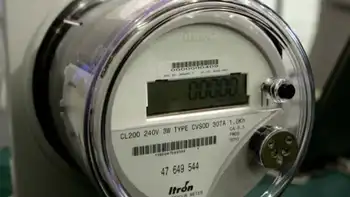The reactor with the retro feel
By Globe and Mail
Protective Relay Training - Basic
Our customized live online or in‑person group training can be delivered to your staff at your location.

- Live Online
- 12 hours Instructor-led
- Group Training Available
The reactor – at least the one that is operable – in this community a 2 1/2-hour drive north of Ottawa celebrated its 50th birthday in November and is looking its age.
There is a Dr. Strangelove feel to the place, from the tile floor to the drab green walls.
It's easy to envision technicians in crew cuts, white shirts and skinny black ties watching the warning lights in the control room for signs that something had gone amiss with what was once a cutting-edge piece of equipment.
The reactor owned by Atomic Energy of Canada Ltd. welcomed a rare visit by a busload of media recently. Tours of the facility were once commonplace, but the terrorist attacks of 9/11 changed all that.
It took a prolonged shutdown, prompted by the safety concerns of Canada's nuclear regulator, to convince the reactor's management that opening the doors for even a short time and to a highly select audience was a worthwhile public relations endeavour.
To get to the reactor, one must pass through a guard house that is a short hop off the Trans-Canada Highway, then drive more than eight kilometres through 10,000 acres of wooded terrain. It's a drive that reporters took recently, in the company of guards equipped with side arms and high-powered rifles.
The unit itself is contained in a non-descript building in the centre of what looks like a 1950s industrial park. Most of the buildings house researchers who examine neutrons and their role in a broad spectrum of activities from superconductivity to vaccine development.
This facility does not produce electricity.
Primarily, it produces knowledge. There are, for instance, parts of the space shuttle Challenger that were sent here after it fell out of the sky two decades ago to determine what caused the fiery crash.
And, of course, there are the isotopes that are used in 50 to 80 per cent of the nuclear medicine procedures in Canada and the United States, from cancer treatments to scans to knifeless surgery.
The location of the reactor was chosen because it is on the Ottawa River and also because it seemed to its builders to be camouflaged both by the forests that surround it and the military base that is just to the south.
What was not taken into wide consideration when it was first constructed was the potential for earthquakes. While they are not common here, they could happen.
So the safety upgrades demanded by the Canadian Nuclear Safety Commission – until emergency legislation forced its reopening – were designed to prevent disaster that could ensue should the Earth decide to shake.
One AECL employee described the required improvements as being a “backup to the backup” to cover the bases for a natural event that might occur once in a thousand years.
With the overriding of the regulator, the isotopes are again being produced and the many research projects are once again back on stream, even though just one of the two cooling pumps that were demanded has been installed. The other will be hooked up in the coming months.
To get to the reactor itself, visitors must pass through one machine that screens for explosives, and another that looks for metals.
Lab coats and booties are worn by all who walk near the unit, which is surrounded by a two-metre buffer of metal. To go in and out of the control room, one must have one's hands and feet scanned for radioactivity, and before leaving there is a full-body check for the same thing.
Security is high, but still there is a sense of being transported to an earlier age.
About 500 metres from the operating unit are the Maple 1 and Maple 2 reactors that were supposed to have started up in the late 1990s but remained out of service as cost-overruns stretch into the hundreds of millions of dollars. When and if they are ever allowed to come online, they will undoubtedly make the existing reactor look like a relic of the past.
In the meantime, this aging machine is critical to the health of people across North America, a fact highlighted by its recent shutdown.











